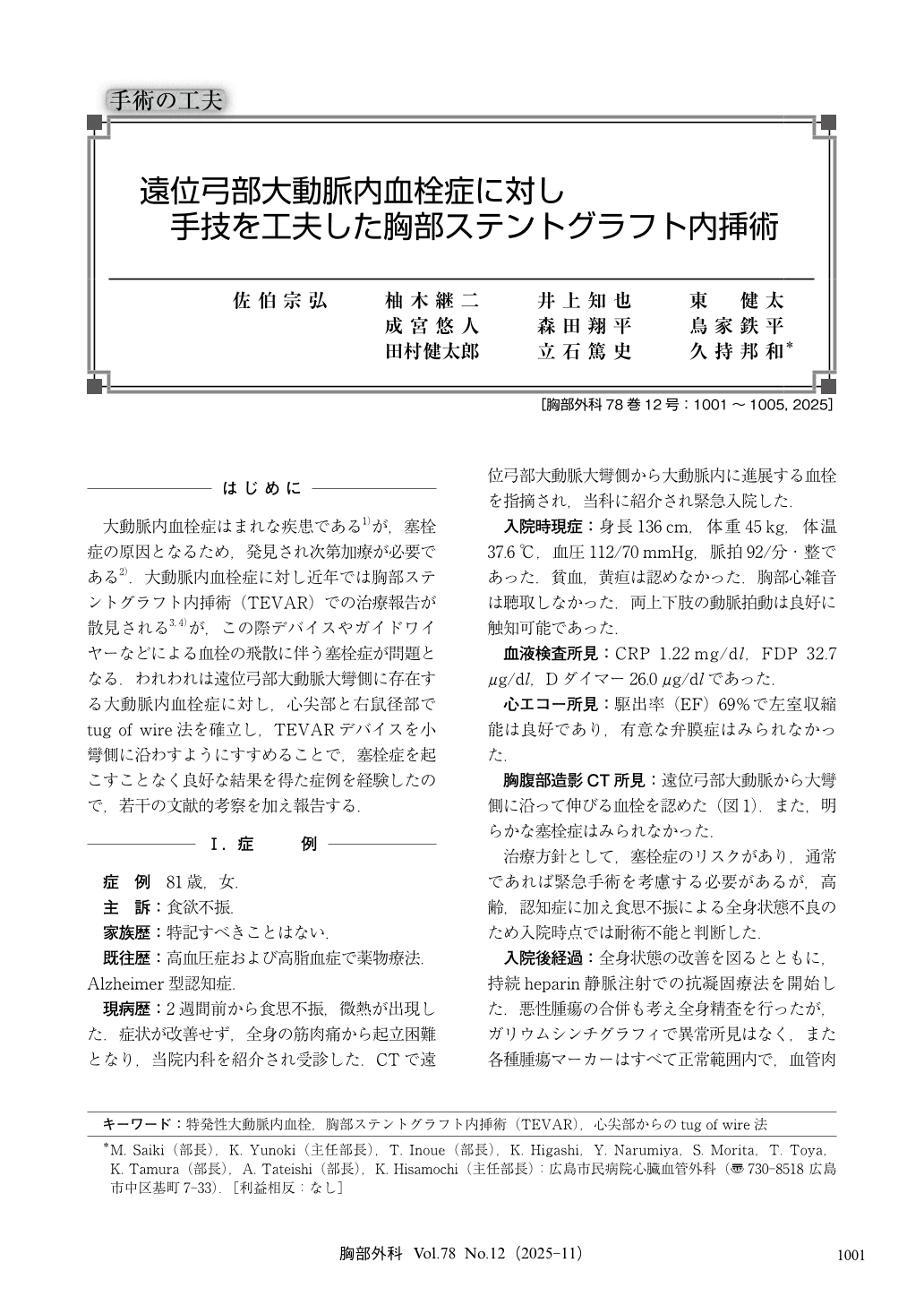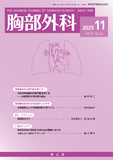Japanese
English
- 有料閲覧
- Abstract 文献概要
- 1ページ目 Look Inside
- 参考文献 Reference
大動脈内血栓症はまれな疾患である1)が,塞栓症の原因となるため,発見され次第加療が必要である2).大動脈内血栓症に対し近年では胸部ステントグラフト内挿術(TEVAR)での治療報告が散見される3,4)が,この際デバイスやガイドワイヤーなどによる血栓の飛散に伴う塞栓症が問題となる.われわれは遠位弓部大動脈大彎側に存在する大動脈内血栓症に対し,心尖部と右鼠径部でtug of wire法を確立し,TEVARデバイスを小彎側に沿わすようにすすめることで,塞栓症を起こすことなく良好な結果を得た症例を経験したので,若干の文献的考察を加え報告する.
An 81-year-old woman was referred to our hospital due to anorexia and low-grade fever for the past two weeks, and was urgently hospitalized since a computed tomography (CT) scan revealed a thrombus in the greater curvature of the distal aortic arch and proximal descending aorta. However, because of her fraility and poor general condition, surgery was not indicated at the time of admission, and anticoagulation therapy was initiated awaiting recovery of her condition. Considering the patient’s age and comorbidities, thoracic endovascular aortic repair (TEVAR) was selected after thorough consultation with the family. In this case, because the device had to be passed through the lesser curvature of the aortic arch to prevent thromboembolisms, the left fifth intercostal space was opened and a tug of wire was established between the apex of the heart and the right groin. By using this technique, device deploy could be carried out without thromboembolisms. The patient was discharged from hospital without any perioperative embolic complications and is currently followed-up at the outpatient clinic.

© Nankodo Co., Ltd., 2025


